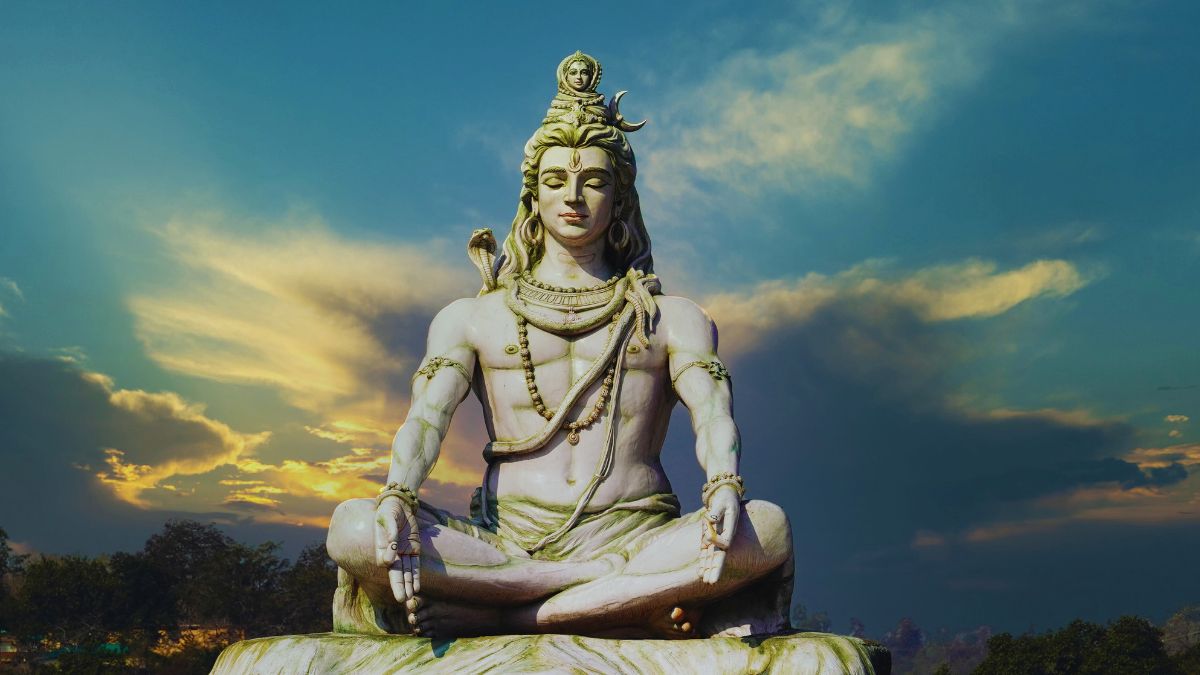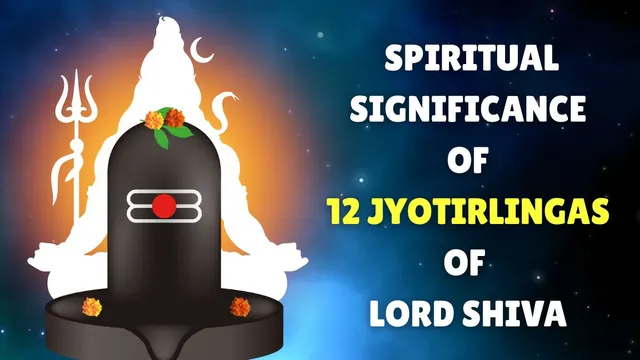- By Kashish Rai
- Tue, 29 Jul 2025 02:37 PM (IST)
- Source:JND
12 Jyotirlinga Of Lord Shiva: Bholenath or Mahadev is worshipped as the great ascetic, destroyer of evil, and the divine force behind all transformation. Across India, countless temples are dedicated to him, but the twelve Jyotirlingas hold a special place of deep reverence. These sites are not just majestic temples but sacred centres of divine energy. It is believed that Shiva revealed his radiant, formless essence at these places, making them powerful spiritual destinations for seekers and devotees alike. Astropatri shares the spiritual significance associated with each of these divine abodes of Lord Shiva.
The Sacred Origins And Meaning Of The Jyotirlingas
The word ‘Jyotirlinga’ comes from two Sanskrit terms - ‘Jyoti’ meaning divine light and ‘Linga’ representing Lord Shiva’s symbol. According to sacred legends, Lord Shiva once manifested himself as an infinite pillar of light, with no beginning and no end, to resolve a dispute between Lord Brahma and Lord Vishnu. Though 64 Jyotirlingas are mentioned in texts, twelve are considered especially sacred and are prominently described in the Shiva Purana.
These twelve Jyotirlingas are believed to be powerful expressions of Shiva’s boundless and formless energy. Each site is seen as a sacred space where the distance between the earthly and the divine dissolves. Devotees believe that at these places, one can experience a deep and personal connection with Lord Mahadev. These shrines are not just places of worship, but portals of spiritual awakening where seekers feel the living presence of Shiva’s infinite grace.
12 Jyotirlingas And Their Spiritual Significance
1. Somnath (Gujarat): Considered the first Jyotirlinga, Somnath symbolises the eternal and indestructible form of Lord Shiva. Despite facing destruction several times, its repeated reconstruction reflects unwavering faith and spiritual resilience.
2. Mallikarjuna (Andhra Pradesh): The second Jyotirlinga lies on the sacred Shri Shaila mountain. It is believed that Lord Shiva and Goddess Parvati reside here together, making it a beautiful symbol of divine love, unity and compassion.
3. Mahakaleshwar (Ujjain, Madhya Pradesh): Famous for its south-facing lingam, this third Jyotirlinga is believed to protect devotees from untimely death and offer security in life.
4. Omkareshwar (Madhya Pradesh): This fourth Jyotirlinga sits on a sacred island shaped like the 'Om' symbol. It represents cosmic sound, creation, and the universal energy that binds all existence.
5. Kedarnath (Uttarakhand): Located high in the Himalayas, the fifth Jyotirlinga is spiritually profound. Reaching this temple is not just a pilgrimage, but also a test of devotion and inner strength.
6. Bhimashankar (Maharashtra): The sixth Jyotirlinga is associated with the slaying of the demon Bhima. Lord Shiva is worshipped here as the protector from evil and dark forces.
7. Kashi Vishwanath (Varanasi, Uttar Pradesh): The seventh and most revered Jyotirlinga, where it is believed Lord Shiva grants liberation to the soul. This temple is seen as a gateway beyond life and death.
8. Trimbakeshwar (Maharashtra): The eighth Jyotirlinga is the origin point of the sacred Godavari River. Known for rituals performed for salvation, it is a place where seekers come for spiritual cleansing.
9. Vaidyanath (Jharkhand): The ninth Jyotirlinga honours Lord Shiva as the divine healer. Devotees believe He cures both physical and emotional ailments, bringing holistic well-being.
10. Nageshwar (Gujarat): The tenth Jyotirlinga is worshipped as a protector against poison and negativity. It symbolises fearlessness, divine strength and protective grace.
11. Ramanathaswamy (Rameswaram, Tamil Nadu): Linked with the Ramayana, this eleventh Jyotirlinga is where Lord Rama is said to have worshipped Shiva after defeating Ravana. It stands for atonement, devotion and divine union.
12. Grishneshwar (Aurangabad, Maharashtra): The twelfth and smallest Jyotirlinga lies near the famous Ellora Caves. It represents rebirth, compassion and spiritual renewal, reminding devotees of the eternal cycle of life and grace.
ALSO READ: Who Is The Snake Wrapped Around Lord Shiva’s Neck? Know Lesser-Known Legend

Jyotirlingas symbolise Lord Shiva’s radiant, formless presence. These twelve sacred shrines represent his divine energy, protection and spiritual awakening for devoted seekers. (Image Source: Canva)
Spiritual And Cultural Influence Of The Jyotirlingas
The twelve Jyotirlingas are living symbols of ancient wisdom, deep devotion and divine presence. Each temple is not only spiritually profound but also reflects the rich cultural and religious traditions of its region. Together, they offer a beautiful glimpse into India’s spiritual diversity and timeless faith.
During auspicious occasions like Mahashivratri, Shravan Mondays and other Shiva festivals, visiting and worshipping these Jyotirlingas is considered especially sacred and rewarding. Devotees offer water, milk, honey and bilva leaves, chanting “Om Namah Shivaya” in a heartfelt effort to connect with Lord Shiva’s cosmic energy.
ALSO READ: Why Tulsi Leaves Are Not Offered To Lord Shiva? Know Lesser-Known Legend
A Journey Of Devotion And Faith
The pilgrimage to all twelve Jyotirlingas, known as the Jyotirlinga Yatra, is more than just a physical journey. It is a path of deep spiritual transformation, where both the endurance of the body and the devotion of the soul are truly tested.
These sacred sites gently remind us that Lord Shiva resides in every corner of India, from the snow-clad peaks of Kedarnath to the serene shores of Rameswaram. Each shrine stands as a beacon of inner awakening, guiding every seeker towards peace, self-realisation and ultimate liberation.

